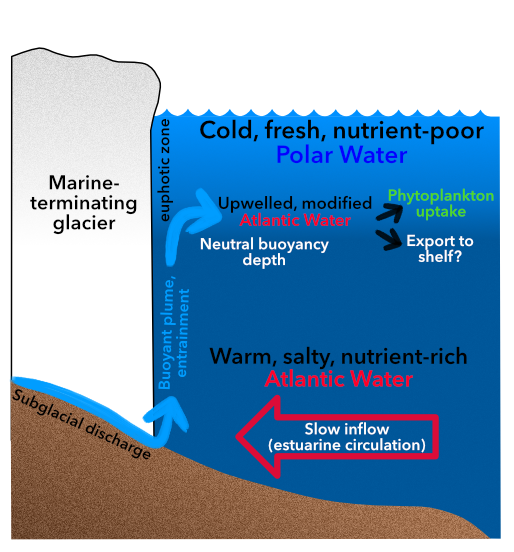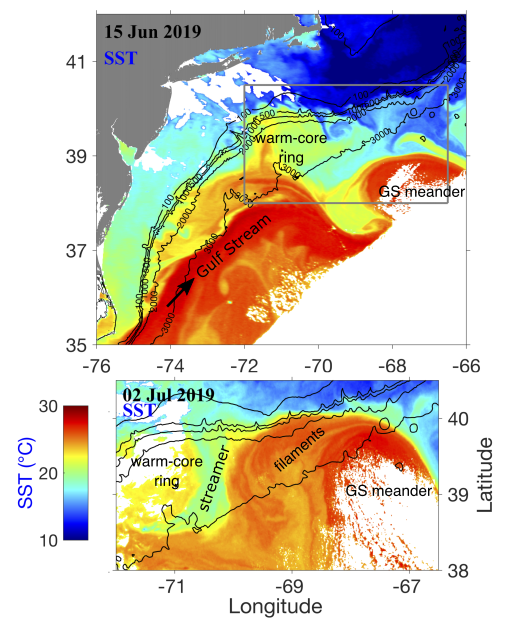Research

Glacial meltwater impacts on coastal biogeochemistry
Rising global temperatures and melting polar ice sheets are increasing the delivery of freshwater to high-latitude coastal oceans, which may influence coastal marine ecosystems. Primary producers, in particular, are likely to be impacted by changes in light or nutrient regimes. Understanding the connections between increased glacial meltwater delivery and coastal productivity will ultimately improve projection and management of the effects of climate change.
I study how ice sheet melting influences phytoplankton productivity through the availability of photosynthetically active radiation (PAR) and bioavailable nutrients. My dissertation focused on two regions experiencing large increases in glacial meltwater delivery to the ocean: Greenland’s shelves (Oliver et al., 2018) and fjords (Oliver et al., 2020), and the Amundsen Sea Polynya (ASP) in the coastal Antarctic (Oliver et al., 2019). In both regions, I coupled physical and biogeochemical modeling to understand the sensitivity of phytoplankton to meltwater-driven changes in the physical and chemical regimes.

Gulf Stream impacts on productivity in the Northwest North Atlantic
In recent decades, the Gulf Stream in the slope sea south of the New England shelfbreak has destabilized; vigorous meanders now characterize the former relatively straight and stable jet. To understand the implications of an increasingly meandering Gulf Stream for marine ecosystems in the New England shelfbreak region, my postdoctoral research seeks to 1) isolate the mechanisms by which meanders and warm core rings influence light and nutrient conditions for phytoplankton growth, and 2) determine how these mechanisms scale across time and space, using both modeling and observational approaches.
References
Oliver, H., Luo, H., Castelao, R. M., van Dijken, G. L., Mattingly, K. S., Rosen, J. J., Mote, T. L., Arrigo, K. R., Rennermalm, Å. K., Tedesco M., & Yager, P. L. (2018). Exploring the Potential Impact of Greenland Meltwater on Stratification, Photosynthetically Active Radiation, and Primary Production in the Labrador Sea. Journal of Geophysical Research: Oceans, 2570–2591. https://doi.org/10.1002/2018JC013802
Oliver, H., St-Laurent, P., Sherrell, R. M., & Yager, P. L. (2019). Modeling iron and light controls on the summer Phaeocystis antarctica bloom in the Amundsen Sea Polynya. Global Biogeochemical Cycles, 33, 570-596. https://doi.org/10.1029/2018GB006168 (PDF)
Oliver, H., Castelao, R. M., Wang, C., & Yager, P. L. (2020). Meltwater-enhanced nutrient export from Greenland’s glacial fjords: a sensitivity analysis. Journal of Geophysical Research: Oceans, 125(7), 1–18 https://doi.org/10.1029/2020JC016185